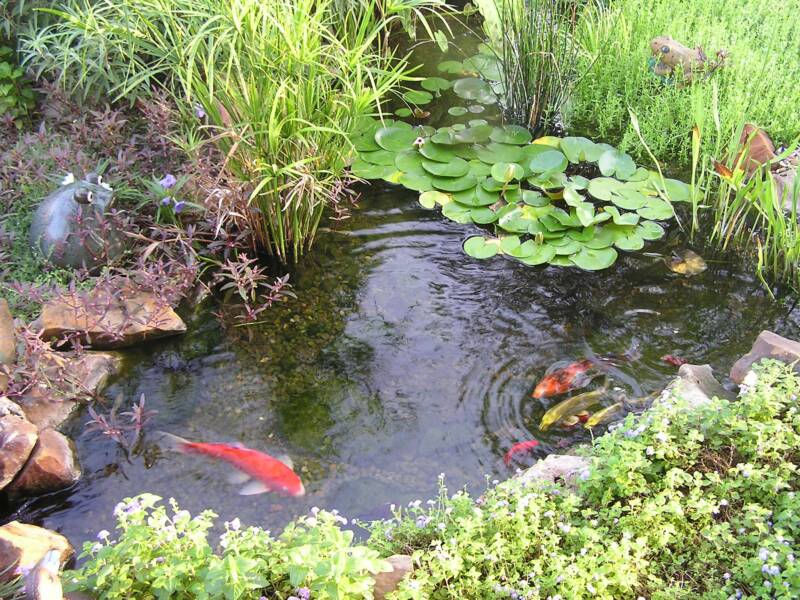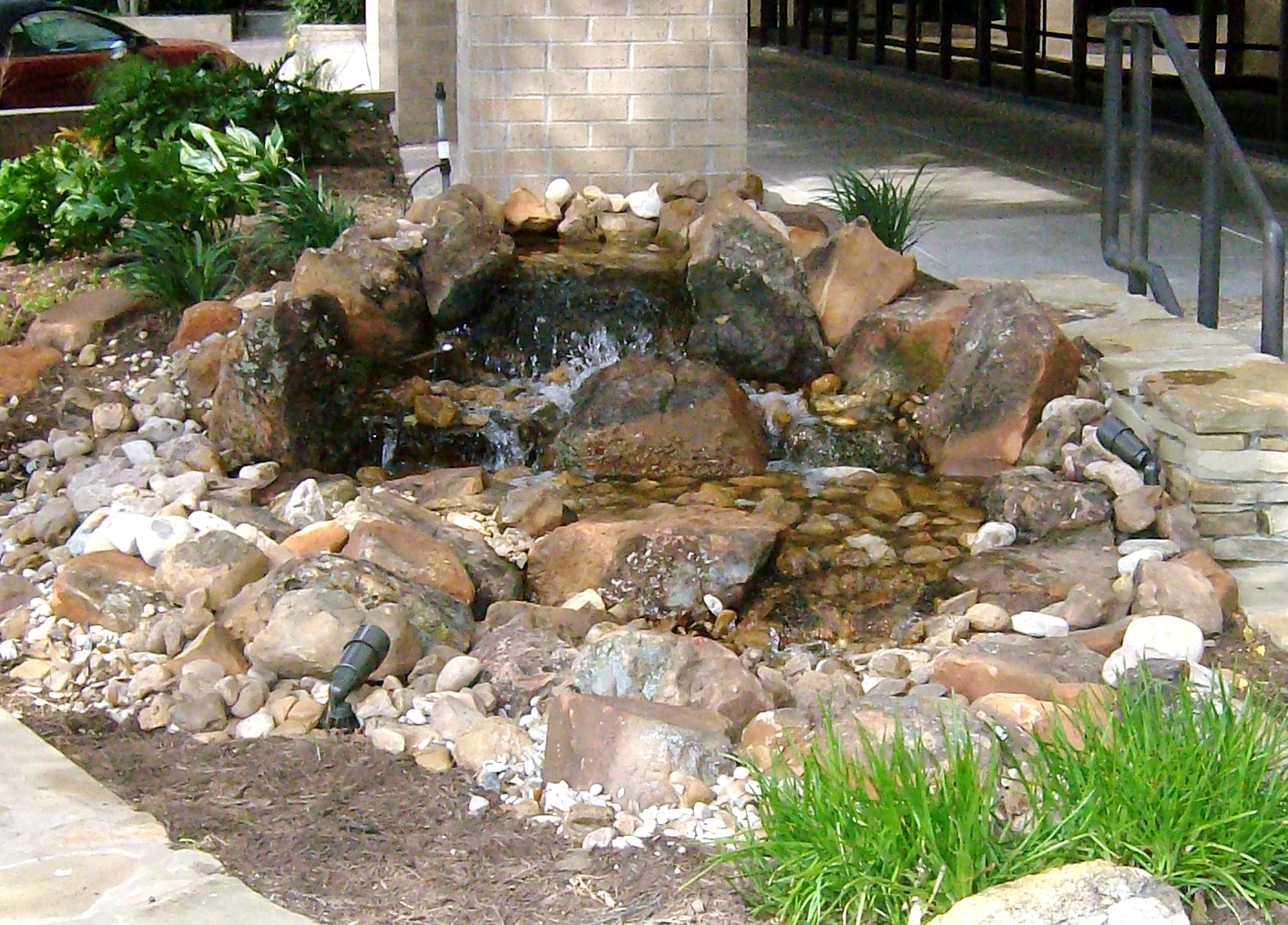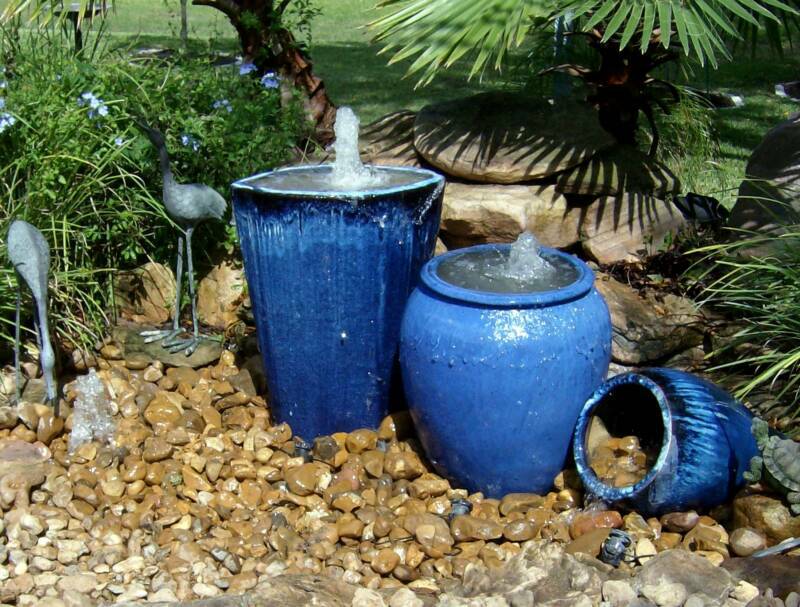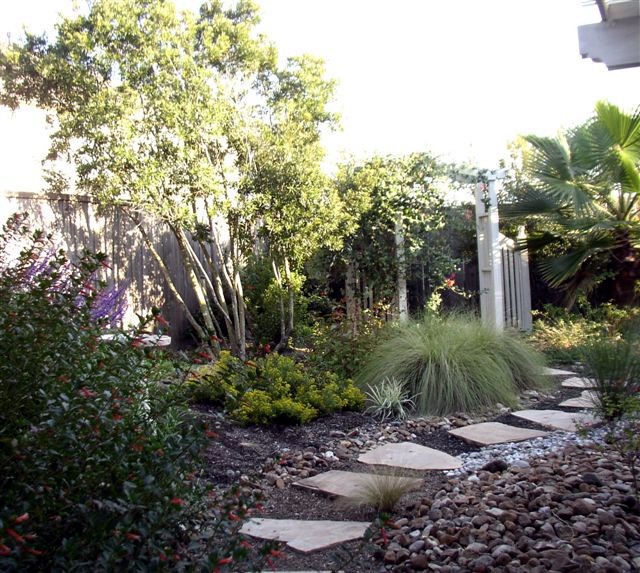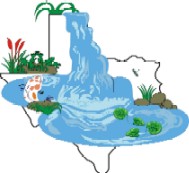


Rainwater Harvesting
Organic Ecosystem Ponds
Pondless Waterfalls
Urn and Fountain Features
Water-Wise Landscapes
Meet Your Water Feature Professionals


Texas Ponds and
Water Features
UV or not UV?
(It shouldn't even be a question anymore!)
by Matt Boring
The Natural Water Gardener
The question of whether or not to bombard your pond's water with lethal doses of ultraviolet radiation should be a no-brainer for most anyone. UV sterilizers came to the pond industry from the older pond filtration systems that often didn't do the job that they were designed to do and therefore left their owners with bright green water. This shiny, pea soup-color was usually so rich and thick that they couldn't even see their fish unless they swam up to the surface to get fed. After the food was gone, they would disappear into the emerald abyss till the next day's feeding time. You can still see these ponds in the yards of friends and neighbors as well as in botanical gardens and other public areas in many cities. Usually there is an exposed black liner or concrete along the bottom and sides of the pond and not much has been done to help create any sort of ecosystem. The individual living things in the pond seem to be there simply as decorations for the owner's backyard rather than intertwined parts of a symbiotic ecosystem. Many times the potted aquatic plants are perched on cinder blocks for height.
UV sterilizers are left over from the days before backyard ponds were thought of as or built to be ecosystems. The ecosystem pond has really caught on with a more environmentally-aware public and when designed and constructed correctly is the lowest-maintenance pond system being installed today. But some people still mix old ideas with the new and destroy the ecosystems they're attempting to create before they even get started. Even well-intentioned organic advocates such as Kathy Huber, garden editor for the Houston paper, bless her heart, are still giving out misinformed advice. I know for a fact that she is a pro-organic voice in a petrochemical town and she faithfully gives out organic advice every week, even printing some of Howard's recipes a couple of years ago. But her recent article about creating an ecosystem in your pond suggested that you use a UV filter to control algae. That UV light will not affect string algae and it will destroy the base of the ecosystem at the same time. I'll explain how later, but suffice it to say it's not a worthy trade-off.
Older types of pond filtration sought to overcome nature's own processes usually through over-filtration (modified pool filters) or the addition of chemicals and mysterious liquids, requiring the use of test kits daily to micromanage the pond water. Since it's really hard to dominate nature consistently over a long period of time, the lack of balance in the aquatic ecosystem that is the individual pond produces an excess of free-floating nutrients. Since there is nothing in place in these outdated systems to remove these excess nutrients, millions of single celled algae form, using these nutrients and chlorophyll to produce sugars which gives them the energy to live and reproduce. And reproduce they do, tinting the water a bright green color that might be great for St. Patrick's Day, but is ugly the rest of the year.
Rather than trying to understand and then balance the ecosystem, the industry giants of the day introduced yet another product into the market-- the UV Sterilizer. This little beauty kills anything organic that passes through it. It will kill the suspended algae cells in the water, but also kill the beneficial bacteria that are there to help remove the ammonia in the fish's waste before the levels become toxic. It also kills phytoplankton, protozoa, and even zoo plankton which make up the first two levels of a healthy pond ecosystem. Imagine a pyramid with water as its foundation. The first level on top of the foundation would be the microscopic consumer/converters like bacteria, phytoplankton, and protozoa. They consume waste and the chemical elements within (fish poop and other organic material) and convert these into living energy and mass. Aquatic plants are also on this level, taking nutrients that you can't see from the water and turning it into mass that you can plainly see.
The next level of the pyramid is the zooplankton. These are tiny little animals that are also consumers. They are technically part of the next level which is invertebrates, but they are considerably smaller so they're lower on the food chain. The invertebrates include larval insects, nymphs, and worms. They also include snails and the insects that live in and around your pond, such as the water strider that walks across the surface, the whirligig beetle that swims around in crazy circles, and even the dragonflies and damselflies that flit around the yard. They lay their eggs in the water and the baby dragonfly goes from birth through nymph stage in the water before one day crawling up a plant stem to emerge as an adult and spread its wings for the first time.
Above the invertebrates are the frogs, salamanders, and newts. The next level is the fish and the top level of the aquatic food chain are the animals that connect the pond to its regional environment. These animals, such as birds, snakes, turtles, and even raccoons, may visit the pond but don't necessarily live there for long. Even the turtles are naturally migratory and will probably move on at some point.
Now I haven't tried to bore you with the levels of the aquatic ecosystem or tried to teach you anything behind your back. I just want you to be able to understand how each level is dependent on the levels below it for food and therefore for life. If you indiscriminately kill off the first couple of levels of the ecosystem with a UV sterilizer for the sake of convenience, it will be absolutely impossible to build a properly functioning aquatic ecosystem on that foundation of dead water. The invertebrates need the zooplankton for food. If they don't survive, the levels above them won't have food either. Of course people will feed their fish, so they won't die. But what you have in those ponds is more similar to an aquarium than to a real aquatic ecosystem no matter what you call it.
The green color is a symptom of an unbalanced ecosystem much like persistent headaches might be a symptom of eye strain. If we balance the ecosystem, the green will go away and if we get new glasses, the headaches will go away. Why would anyone try to mask the symptom and ignore the problem rather than address the problem and eliminate the symptom? Why would you hide the green water rather than eliminate the cause of it? Would you just take Tylenol every day for years rather than getting some new glasses? Maybe, if you didn't know better.
A properly built ecosystem pond will never have green water once it has balanced and therefore will never need a UV sterilizer. If you have green pond water, maybe it's time to update your system and work with nature, not against her. She won't let you down.
Happy Pondering!

